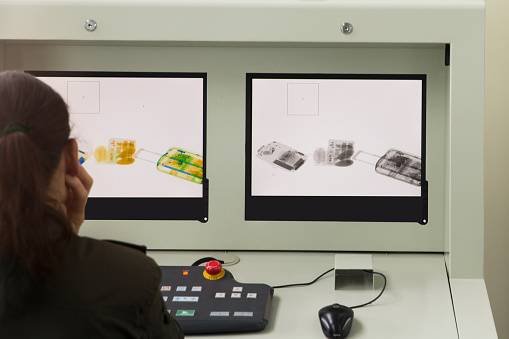If the thought of someone looking up your name online gives you anxiety, think about how you’d feel if you had to go through a rigorous background investigation to get a job. That’s what people who need a security clearance have to go through, but knowing what to expect can take some of the apprehension out of the situation.
The following are eight things to know about security clearances, whether you’re a job seeker or you’re just curious.
1. The Basics
A security clearance is something U.S. government agencies provide. These are authorizations to give access to restricted information or areas. Agencies have to request the right level of clearance when they hire someone new.
Government investigators will look at the candidates’ backgrounds to determine if they’re eligible. Along with reviewing criminal records and fingerprints, investigators interview friends, family, and other people the individual knows.
There are different types of clearances based on the levels of sensitive information someone might be exposed to in a role.
There are around four million people with security clearances currently, including not only government employees but personnel of the military and personnel associated with government contractors.
After an investigation, an adjudicator is responsible for comparing the results against the guidelines supplied by the Office of the Director of National Intelligence. There are 13 guidelines assessing personal conduct, national allegiance, and information technology use.
2. There Are Different Types of Security Clearances
The U.S. government provides three security clearance levels.
The first is confidential clearance. If you’re a holder of a confidential clearance, you have access to information that could be damaging to national security if released. Someone who works as an executive assistant or program manager might need this level of clearance, and it has to be renewed every 15 years.
Secret clearance provides access to data that, if it were released, could cause serious national security damage. Someone like a cybersecurity analyst might need this level of clearance, and it has to be renewed every ten years.
Top secret clearance means that someone has access to information that, if released, could lead to grave national security damage. The clearance level requires a reinvestigation every five years.
There are also two classified categories that require more restrictions on handling and access. There’s sensitive compartmented information or SCI, including intelligence sources, processes, and methods. There are also special access programs or SAPs, which are very sensitive programs and projects.
3. Who Needs a Security Clearance?
If you’re applying for a job with the federal government, your background check process starts after you accept a job offer. Your job offer is conditional, dependent upon you getting the needed clearance.
You’ll provide information about where you’ve lived, gone to school, police and military records, and job history. You’ll need to provide at least ten years of personal information.
4. The Process
If you’re applying for a security clearance, you go through an evaluation. The evaluation is a way to determine if you’re loyal to the U.S. government and free from influence by foreign entities and individuals. The process is also looking to make sure you’re honest, morally upright, trustworthy, and mentally sound.
You start the process by completing the Personnel Security Questionnaire (SF-96). You can only access this system if you’ve been invited by someone at your sponsoring agency.
The next step is an investigation. Depending on the position, this could be conducted by the Defense Department, the Office of Personnel Management, or the Office of the Director of National Intelligence.
The agents charged with conducting the investigation interviewed a broad set of contacts.
The applicant is interviewed, and then the final stage is a review of gathered information.
5. Different Statuses Keep Candidates In the Loop
When someone is going through the process of getting their security clearance, the Defense Security Service issues statuses, so they know what’s going on at any given time.
Received status means the investigation request has been received, and it’s being reviewed to make sure it’s acceptable.
The Defense Security Service will mark an investigation request as unacceptable if it’s rejected at this point. If an employee still needs a clearance, then a new request for an investigation has to be initiated and submitted with the right information.
Scheduled means the investigation request is acceptable, and the investigation itself is open or ongoing.
Finally, closed means the investigation is complete, and it’s been sent for adjudication.
6. Reasons for Denial
There are a wide set of reasons why someone might be denied a security clearance. Some of the most important factors include honesty, candor, and ensuring you’re thorough when you complete your forms.
Every case is assessed individually.
The adjudicative guidelines relate to financial considerations, drinking or substance misuse, personal conduct, foreign preference, sexual behavior, criminal conduct, and mental and personality disorders. Misuse of information technology and outside activities are also assessed.
If you’re denied a security clearance, you’ll be told why, and then you’ll get information on how to file an appeal. You’ll also have the chance to address derogatory information that was uncovered during your investigation and correct or clarify it.
A single area of concern doesn’t automatically mean you’re disqualified. An investigator will consider your response to the concern and whether you’ve made an effort toward positive changes since the time of the incident.
7. The Length of Time a Clearance is in Effect
A security clearance is only active for the time you have the original job you got it for. You can be reinvestigated at any time. A formal review is required after five years if you have a Top Secret Clearance. For a Secret clearance, a review is required after ten years, and you have to go through a review every 15 years for a Confidential clearance.
8. Jobs Requiring a Security Clearance
Finally, anyone working in a job requiring access to classified information requires a clearance. Specific jobs that often require clearance include cryptographers, who are senior-level cybersecurity experts, security analysts, and counterintelligence analysts. Technical writers and chief information security officers are other examples of roles that often need a security clearance.














